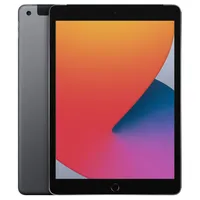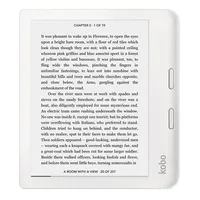TechRadar Verdict
Our biggest issue with the original InkPad Color ereader was its lack of saturation. PocketBook has tried to improve on that in the InkPad Color 2 by adding a new filter, but the results are mixed – some hues look better, others not so much. However, it gets a better processor for improved performance, waterproofing that its predecessor missed out on, and adjustable light temperature as well. While its improvements are commendable, low contrast, its clunky interface and the lack of a proper book store for global markets make it a little hard to recommend outside of some European countries.
Pros
- +
Better processor for faster performance
- +
Sleek, waterproof design
- +
Dropbox and Google Drive integration
Cons
- -
Lacks contrast in grayscale and color
- -
Speaker is superfluous
- -
User interface could be better
Why you can trust TechRadar
PocketBook InkPad Color 2: one-minute review
It’s fair to say that color ereaders still have a way to go before they become mainstream, but one company looking to make sure we get there is PocketBook. The European brand’s InkPad Color 2 ereader takes what worked on the original model, improves upon it slightly, encases it in a sleek, new design, and throws in waterproofing to make sure you can take it on your next poolside holiday.
If you primarily read comics and graphic novels, then the InkPad Color 2 isn’t a bad option, and I enjoyed using it more than its predecessor. Firstly, I found it faster and more responsive than the original – read my PocketBook InkPad Color review to find out more – thanks to a new quad-core processor. I also like the fact that it’s got IPX8 waterproofing (the previous model had none) and adjustable light temperature, which strains the eyes less when you’re reading in the evening or at night.
I also found that some colors look marginally better on the screen – that’s thanks to a new filter. However, the Color 2 retains the older-generation E Ink Kaleido Plus display found on the older model, when the latest color screen to be had is the Kaleido 3. While the colors are still not as saturated as I would have liked, some hues do look richer and they get better as you increase the brightness. Other colors, though, still look quite washed-out (muted) and I’d probably hold out for a color ereader till someone decides to use E Ink’s Gallery 3 screen technology, which promises saturation similar to what we’re used to seeing on our phones. Sadly, the screen also lacks in contrast when compared to other similar models.
The InkPad Color 2 features a small speaker (you can see the grille on one edge of the device), but I think it’s unnecessary – the sound is decent, but it doesn't get very loud and, with Bluetooth 5.0 support, you’re better off pairing your reader with a set of headphones to enjoy audiobooks.
While the improvements look good on paper, the user interface is still not as streamlined as we’ve seen on other ereaders, and you can’t purchase content directly from the device’s book store if you live outside the European Union.
Still, it’s good to know that you get these improvements – as incremental as they may be – for the same launch price as the older InkPad Color ereader.
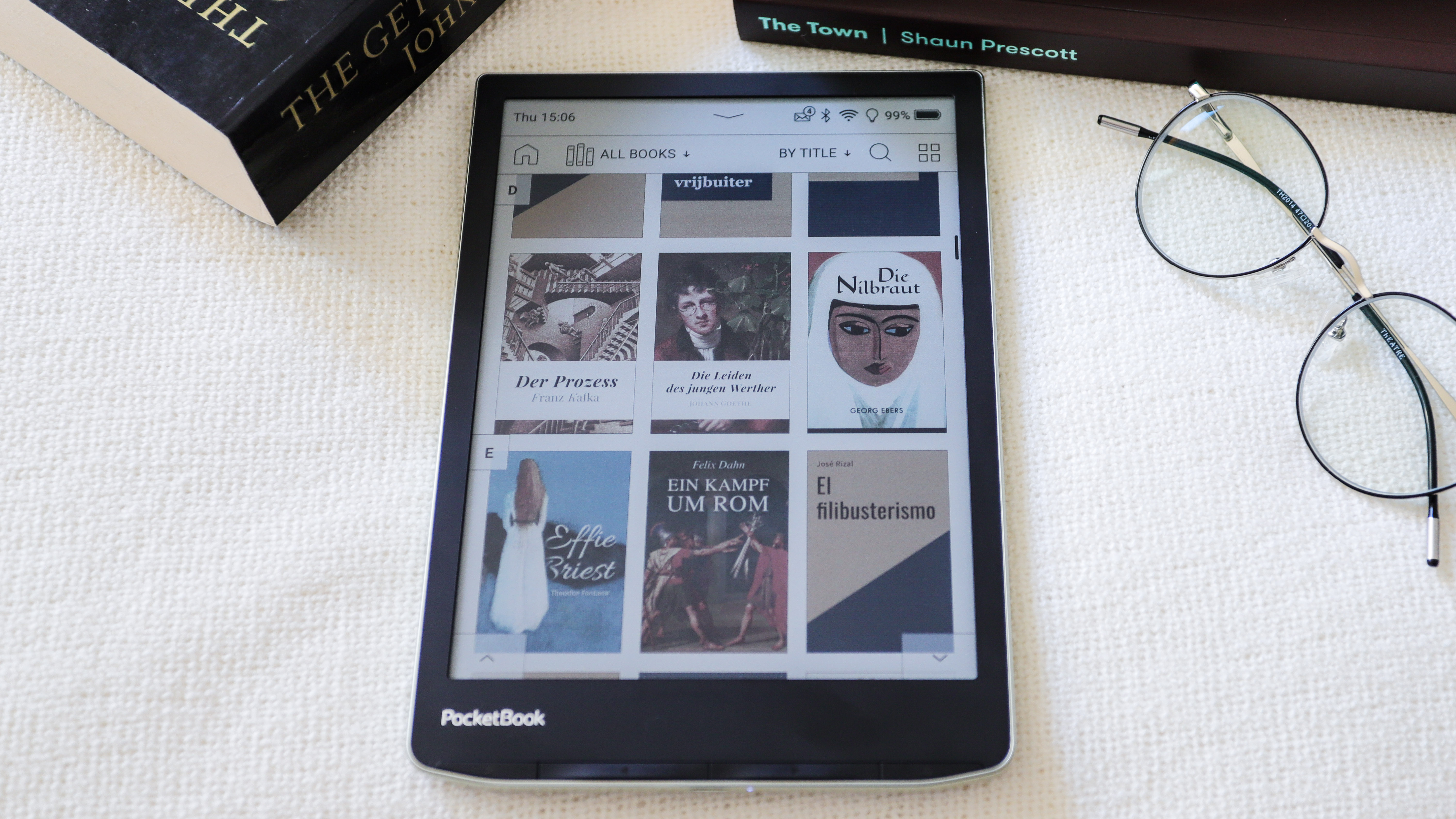
PocketBook InkPad Color 2 review: price and availability
- Announced April 2023
- Available to buy now for $329 in the US
- Available in UK and Australia as international imports via Amazon
Two years after PocketBook announced the original InkPad Color ereader, it released the second-generation model… and for the same price too! Which is good news, as there’s more bang for your buck here than before.
Sign up for breaking news, reviews, opinion, top tech deals, and more.
The InkPad Color 2 is available to buy directly from PocketBook or from some third-party retailers, and will set you back $329 in the US. If you happen to be in the UK or Australia, your best source for picking up the InkPad Color 2 would be Amazon UK and Amazon AU respectively, where you can get the German import for about £345 and AU$595 respectively.
That’s not a bad price for a 7.8-inch color ereader, although for a little extra money ($399 in the US), you can get the older Onyx Boox Nova 3 Color, which also has writing capabilities.
A more up-to-date color ereader would be the Onyx Boox Tab Mini C, which has a 7.8-inch E Ink Kaleido 3 screen, an octa-core processor, and runs Android 11 for a slightly smoother user interface and full-featured writing capabilities, and costs $450 / £450 / AU$765.
While still not cheap, the InkPad Color 2 could well be worth your while if you really want a color-screen ereader and don’t need to take notes on it.
• Value score: 3.5 / 5

PocketBook InkPad Color 2 specs
| Display type: | E Ink Kaleido Plus |
| Screen size: | 7.8 inches |
| Resolution: | 300ppi (2480 x 1860) for B&W; 100ppi (468 x 624) for color |
| Processor: | 1.8GHz quad-core |
| Frontlight: | Warm and cold |
| Storage: | 32GB (non-expandable) |
| Battery: | 2,900mAh |
| Speaker: | Mono |
| Water protection: | IPX8 |
| Software: | Linux based |
| Connectivity: | Wi-Fi, Bluetooth, USB-C |
| File support: | 22 document, 4 image, 10 audio |
| Dimensions: | 134 × 189.5 × 7.95mm |
| Weight | 265g |
PocketBook InkPad Color 2 review: Design and display
- Refreshed design reminiscent of PocketBook Era
- Good-sized screen
- Older-generation display technology with new color filter
All PocketBook ereaders have a signature design – either rounded or cut-off corners. The PocketBook Era had the latter, and the InkPad Color 2 inherits a similar, more modern look compared to the rounded corners of the older model. I’m a real fan of this design aesthetic – it’s refreshing, and the InkPad Color 2 looks even better thanks to the metallic silver (what PocketBook calls Moon Silver) trim around the side of the chassis.
That’s not the only design aspect the InkPad Color 2 inherits from its Era cousin – the PocketBook branding is now on the lower-left corner of the tablet rather than in the center (as on the older InkPad Color), and matches the color of the silver trim.
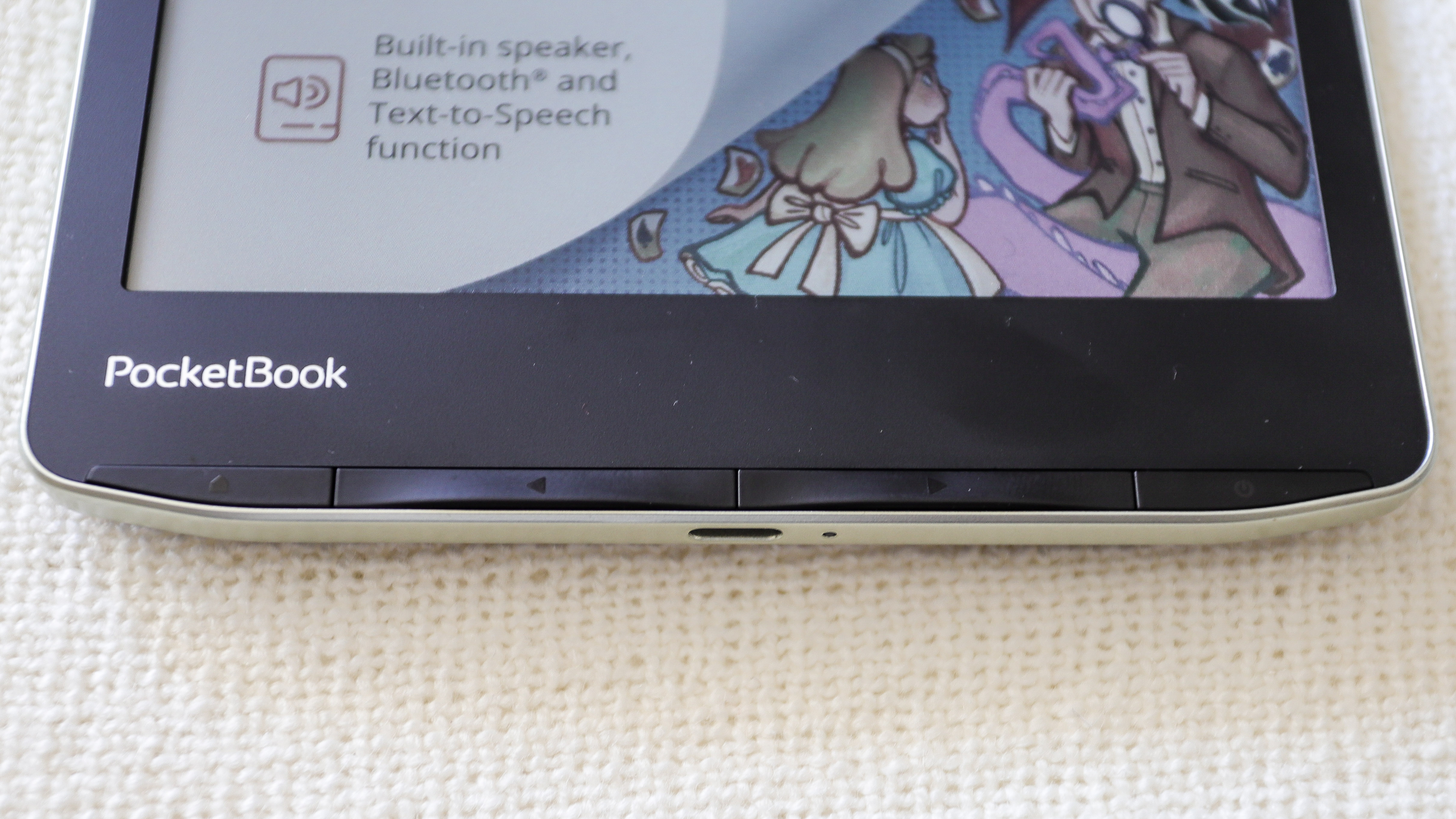
The front bezels and the rear panel is black plastic that is a magnet for oily fingerprints, and given the rear is textured, not that easy to wipe off either.
Barely visible on the edge of the lower bezel are four control buttons. These are marked but, again, quite faintly. I’m not a fan of their placement – they’re so close to the edge that I find it easier to tap on the screen to turn pages. I had the same issue with the PocketBook Era too where the buttons aren’t quite where my thumb sits on the side of the device. While I didn’t quite enjoy the buttons on the older InkPad Color either, at least they were higher up on the bezel so my thumb could rest on the two middle ones.
I still stand by my statement that the buttons on both models of the InkPad Color should be slightly raised or textured differently as they’re hard to find by feel alone and it becomes difficult to put the device to sleep if you’re reading in the dark (which I often do).
Where the older color ereader had a separate power button on the bottom edge, the button on the right corner of the lower bezel doubles up as the sleep and power buttons. You need to go into the device’s settings pane to set that up though. I customized mine to work as a sleep button with a single press and a double to power down. The left corner button gets you to the home screen (and can be customized for another function), while the middle two are the page-turn buttons.
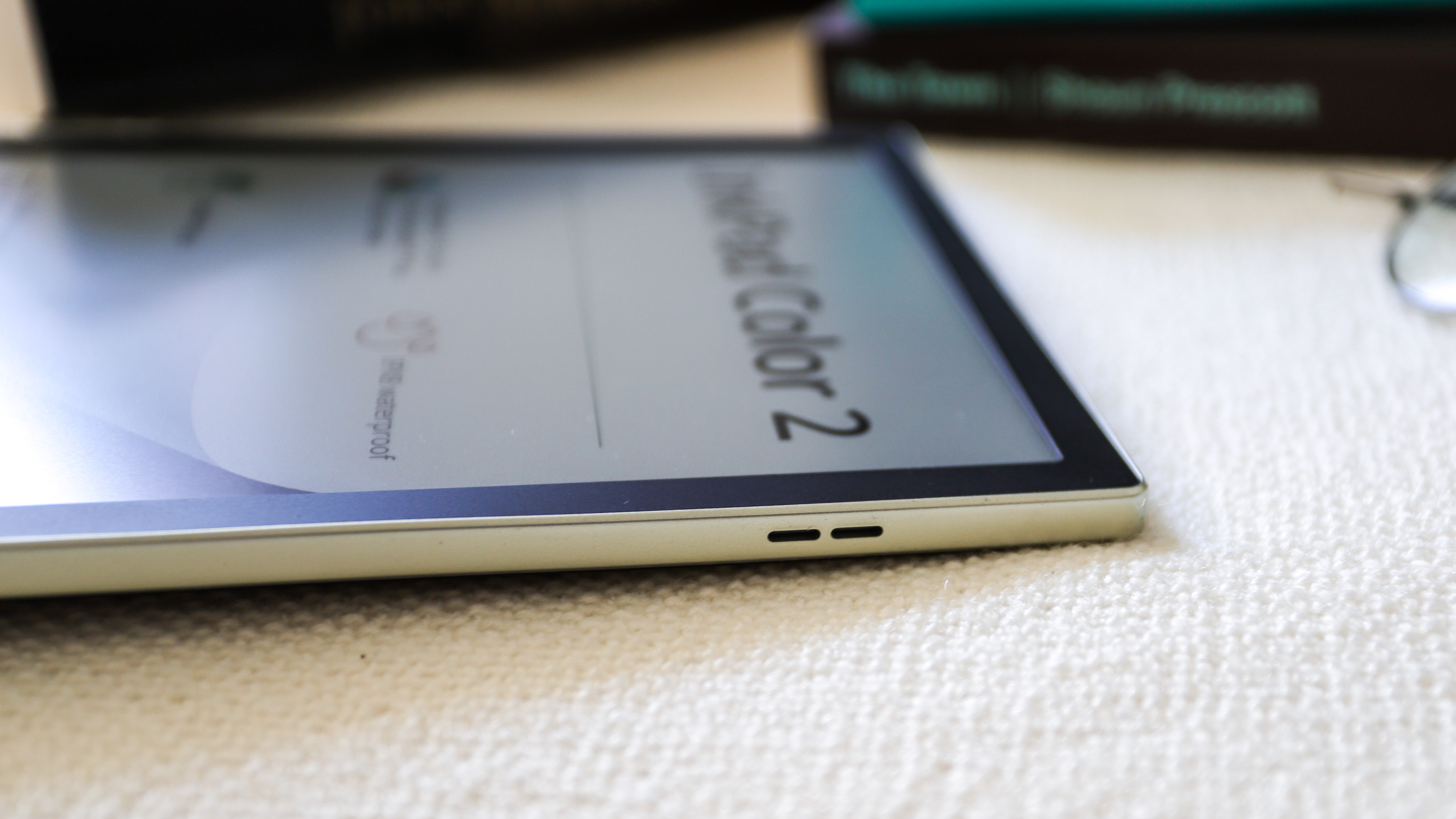
The lower edge now just houses the USB-C port for charging and file transfer, beside which is a tiny indicator light that glows when you press a button, when the screen refreshes or while charging. The right edge has two tiny slits which is the speaker grille.
All in all, it’s a clean, minimalistic look that is now waterproof. An IPX8 rating means the InkPad Color 2 can survive in 2 meters of water for up to 60 minutes.
As before, the main selling point here is the color screen. For me, 7.8 inches is a good size – decent amount of screen real estate so you don’t have to constantly keep turning pages and, thus, eating into the battery life, and it’s still portable. That said, this screen doesn’t always display full pages of a graphic novel – depending on how the file has been set up.
What I’m not quite a fan of is the fact that a 2023 ereader model is using an older-generation screen technology. PocketBook has stuck with the E Ink Kaleido Plus screen it used in its original color ereader, but has tried to improve on it by using a new color filter. This filter, PocketBook says, adds more saturation to the colors displayed compared to the older model. While that’s ever so slightly true for some hues, the overall results are quite mixed. For example, there are some blues that look a lot richer compared to what I saw on the InkPad Color, but some reds and browns still look washed out.
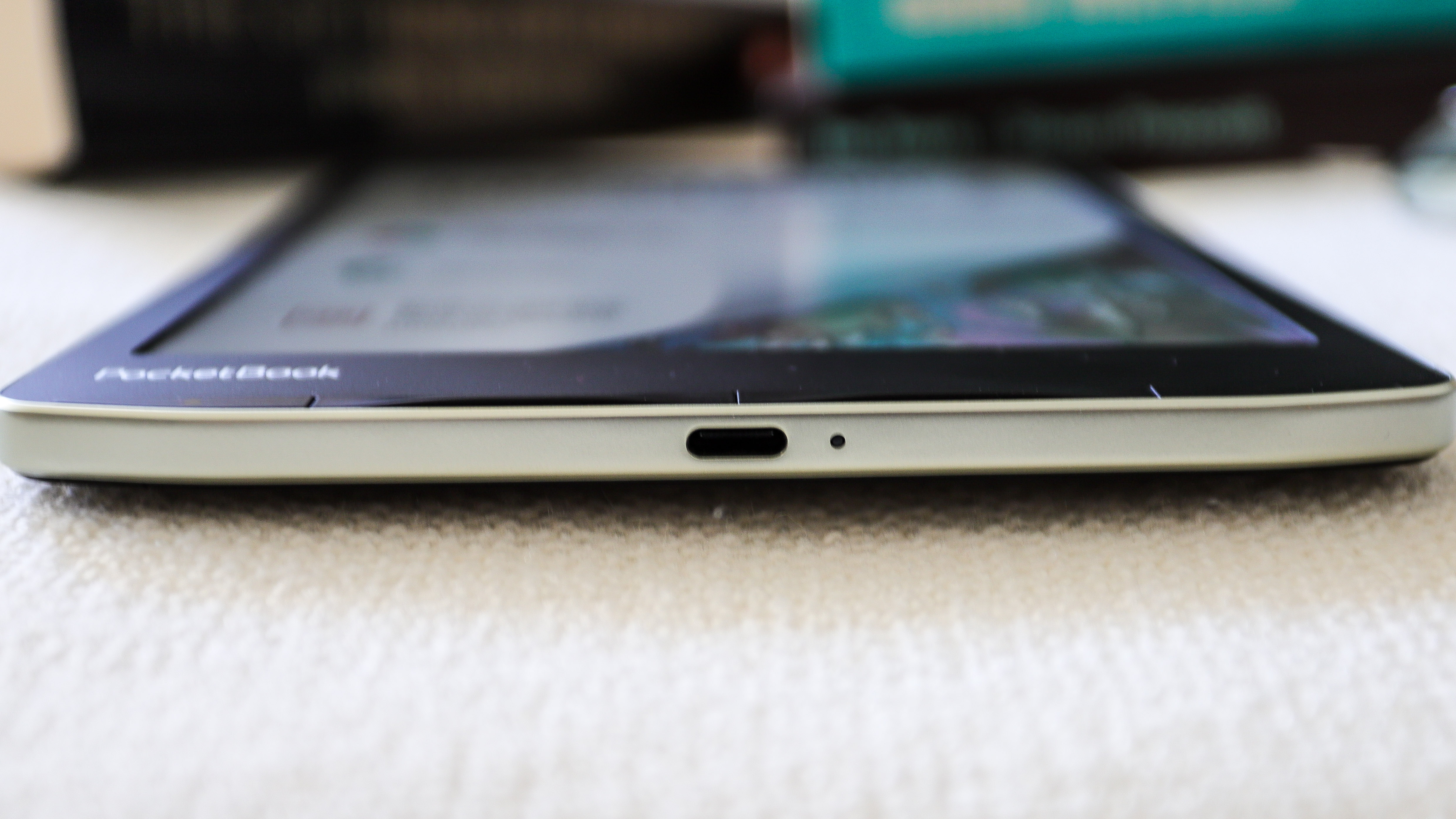
The screen retains a 300ppi resolution for grayscale reading (black and white only) and has just 100ppi resolution when viewing in color. The latter is quite low, considering you can get ereaders with 150ppi color resolution. This may not mean a lot to you if you’ve never used a color ereader before, but I found a significant difference when comparing the InkPad Color 2 side by side with the newer Kaleido 3 display on the Onyx Boox Tab Mini C (see the Performance section for details).
What the InkPad Color 2 does better than its predecessor is offer adjustable light temperature. To be able to change the frontlight hue to warmer tones in the evening or night reduces eye strain and can help maintain your sleep pattern. One thing to note, however, is that if you are reading in color, warmer light will affect the colors slightly.
The InkPad Color 2 gets what PocketBooks calls its SmartLight functionality – when selected, the device will automatically adjust the frontlight temperature to suit the time of day. While that’s nice to have, I found that the auto-selection of the warm tones are just too warm and the display is just too… jaundiced for my liking.
• Design and display score: 3.5 / 5
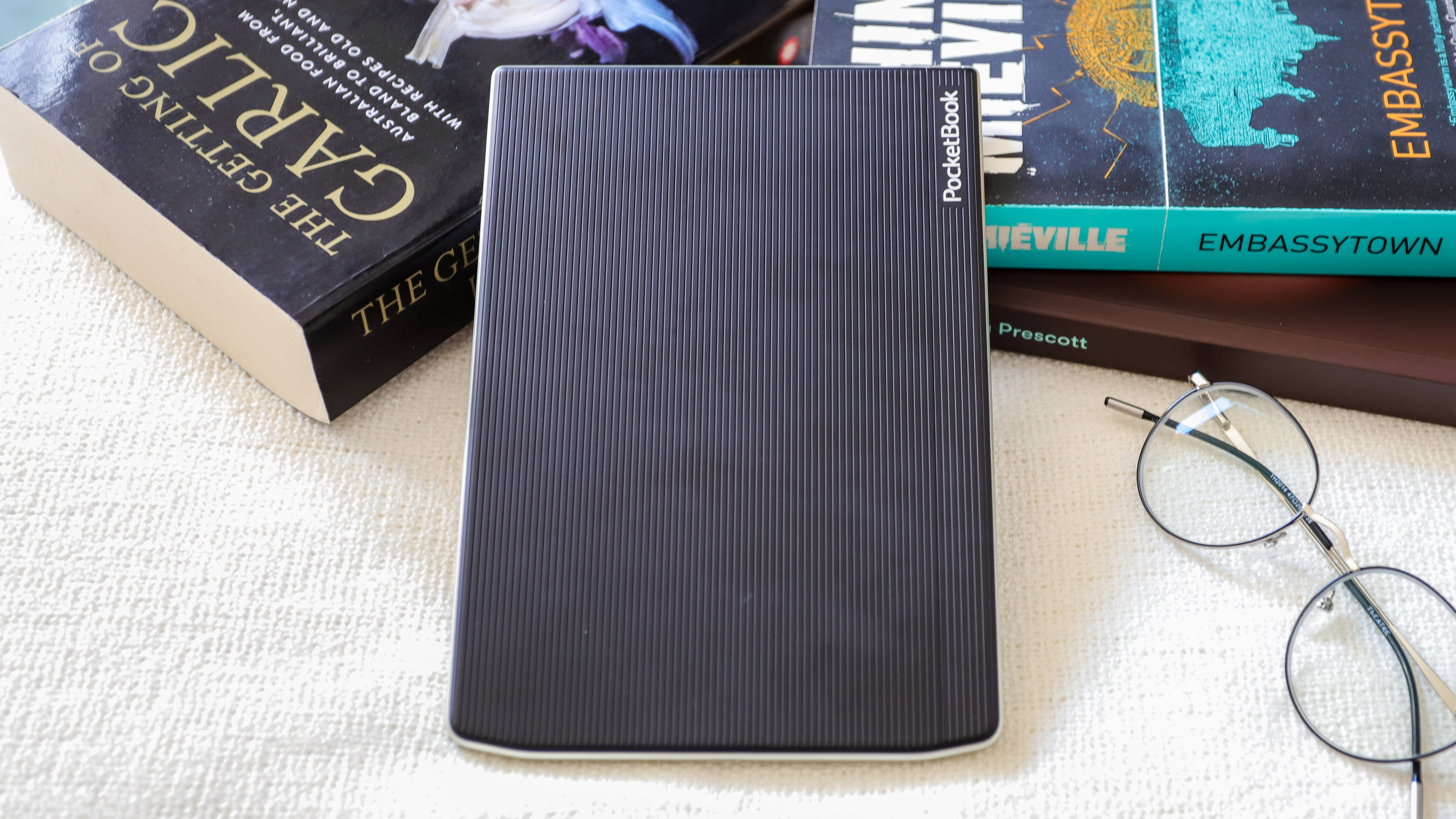
PocketBook InkPad Color 2 review: Software and user interface
- 1GB RAM and 32GB GB internal storage
- Arguably the best file format support of any ereader brand
- User interface could do with some improvements
As I’ve mentioned before, the InkPad Color 2 gets a new processor – while no specifics have been revealed of which precise chip it is, it’s now a 1.8GHz engine compared to 1GHz in the older model. This is paired with 1GB of system memory (or RAM), which might not sound like much but is more than enough for a low-power device like an ereader.
Where the previous model had 16GB of internal storage alongside a microSD slot that can support an additional 32GB, the second-generation color ereader gets non-expandable 32GB of storage. This is usually a lot if you’re mostly storing a library of ebooks, but if most of them are comic file formats – they are typically larger than your average ebook – and audiobooks – which can be larger still – you could eat through that storage space. Even then, it’s a lot!
As with any PocketBook ereader, the operating system is Linux based and I’m still not quite a fan of the user interface. It’s not too bad, really, but it’s not as smooth and streamlined as other ereader setups from the more popular brands. Even Onyx’s Android-based interface is a bit smoother, but the staggering number of customizations available there can be a little mind-boggling.
That said, I like the fact that audiobooks are stored separately from ebooks on the PocketBook, making them easier to find when you want to listen rather than read. Another thing I like about the audiobooks on the InkPad Color 2 is that it continues playing if you go back to the home screen or jump into your library to decide what you’d like to read next. In fact, it will continue playing even if you open an ebook and start reading… handy if you can multitask like that.
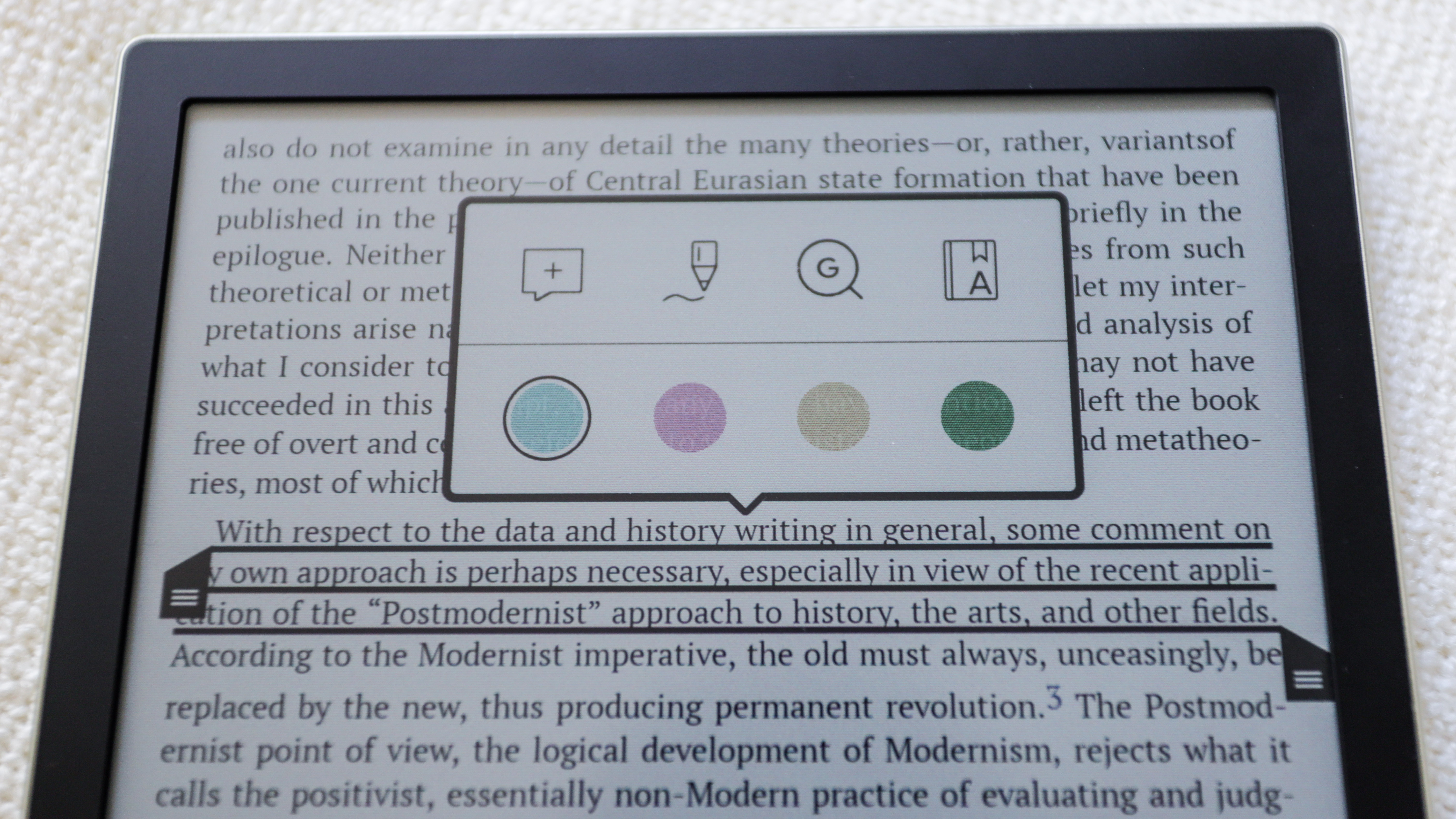
Updates to the user interface since I tested the PocketBook Color have helped make the UX a little better, but I still find it lacking. While the general layout of the home screen is good, I would like to be able to sort my library out as I see fit. On PocketBook ereaders (all of them), your library gets sorted alphabetically by title, but you can filter by author name.
Another thing to commend PocketBook on is the staggering number of file formats its ereaders can support. The InkPad Color 2 can handle a whopping 36 file types, which includes document, images and sound. That’s very impressive indeed. You may not even have some of these file formats, but it’s good to know that the support is there.
The onboard book store, while accessible in any region, will display prices in Euro. You can set up an account if you live outside of Europe and don’t mind purchasing in a different currency. That said, the store doesn’t have a lot of titles you’ll see from the top publishing companies, so your choices will be quite limited.
• Software score: 4 / 5
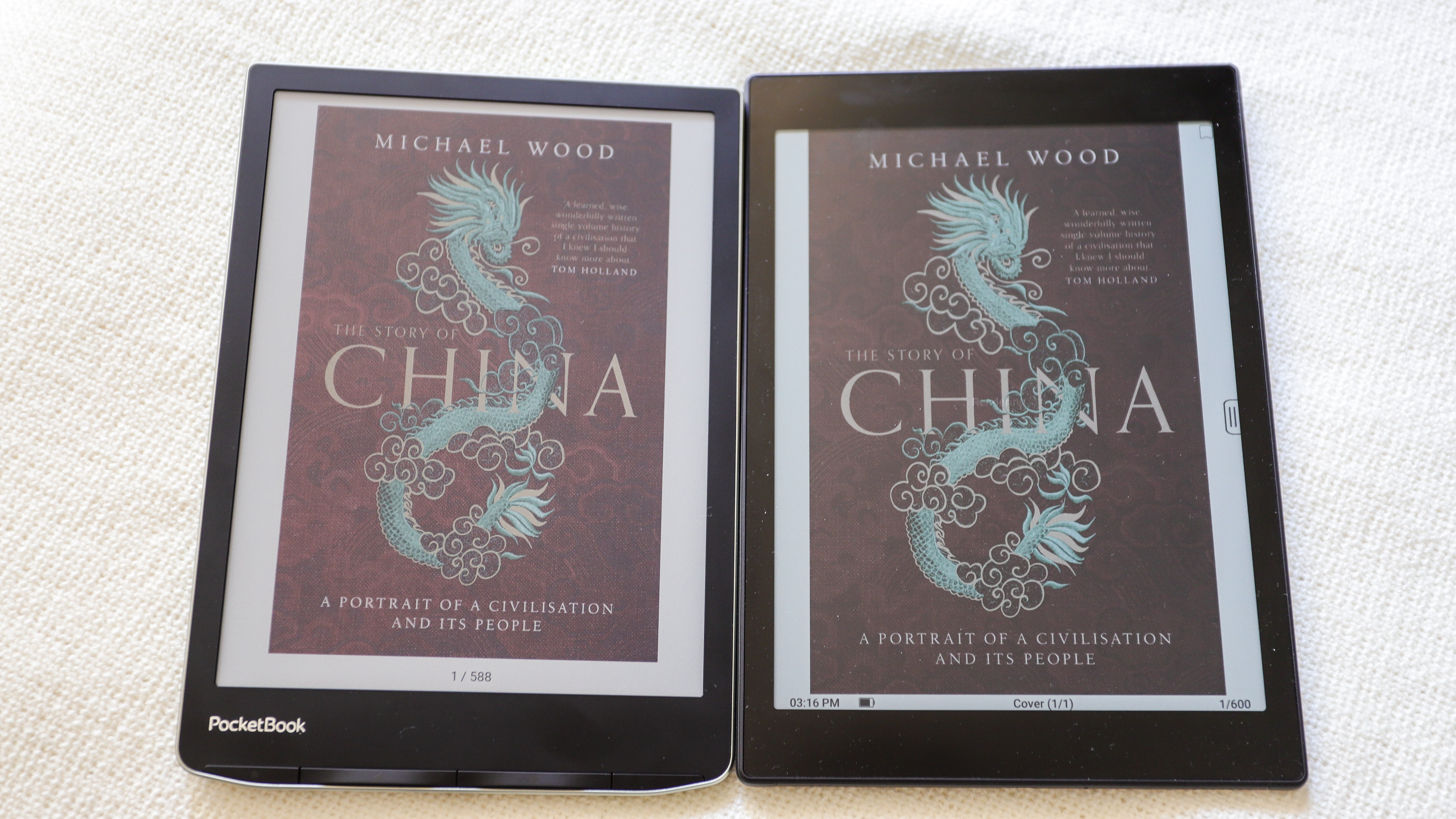
PocketBook InkPad Color 2 review: Performance
- Improved performance over InkPad Color and Era models
- Speaker sound is good
- Screen color resolution is disappointing
Giving the InkPad Color 2 an updated processor was a good call. Issues I noticed in the PocketBook Era – sluggish refreshes, slow loading of page numbers – are no longer a problem. However, I am a little disappointed with the screen.
Despite the 300ppi in grayscale, the screen lacks contrast. A side by side comparison with other monochrome ereaders shows a distinct lack of sharpness to the text displayed on the screen. This makes the InkPad Color 2 comparatively harder to read indoors unless you raise the brightness up. During my testing, I found that the screen looked best at 90% brightness even when using it in a well-lit room. That, however, becomes an issue if you’re reading at night with your room lights off as it can strain the eyes (even if you change the light temperature to warmer hues).
The lower color resolution is also an issue – which is evident when comparing alongside the Onyx Boox Tab Mini C, a 7.8-inch color ereader sporting a Kaleido 3 screen. While some colors look better on the InkPad Color 2 compared to its predecessor, I could see lines and textures that kept distracting me while I was reading a volume of The Sandman graphic novel. Other colors look a lot better on the Onyx ereader, with no texturing evident at all and I think I would pay extra to have a better screen experience.

Aside from the disappointing screen, the new processor has made page turns faster, which was a complaint I had with the InkPad Color 2’s predecessor. The screen is also more responsive than before. However, the refresh rate isn’t as good as what I’ve seen on other ereaders and ghosting can be a problem till a page refreshes. For example, if you’ve selected some text to highlight, you will see light ghosting within the highlighter’s circular color choices. At other times, the cover page takes a second or two to refresh to look its best in color.
If you’re a fan of audiobooks, the built-in speaker is pretty good, but I still think it’s unnecessary. The sound doesn’t get as loud as I’ve experienced with some Onyx Boox models, and I found using Bluetooth headphones an easier experience as it gave me the freedom to move around without the sound getting too faint. Where the sound quality from some Onyx Boox speakers was tinny, the InkPad Color 2 in fact has better sound despite its mono speaker. Not bad, PocketBook!
Battery life is also quite good. The 2,900mAh pack inside will get you about 4 weeks between charges, but that will depend on how you use the ereader. Just reading about 30 minutes a day can get you up to 5 weeks between charges, for example. However, if you read longer or listen to audiobooks more often, you could get less than 4 weeks. The screen brightness setting can also affect the battery life.
Topping up that battery can be a little over an hour from 30% to full, depending on the kind of USB-C cable you use. The one packaged with the ereader itself is quite slow and took me 2 hours and 23 minutes to go from 34% to full. I used an USB-C Type 3 cable plugged into a 65W GaN wall plug and that took1 hour and 17 minutes to go from 30% to 99%.
• Performance score: 3.5 / 5
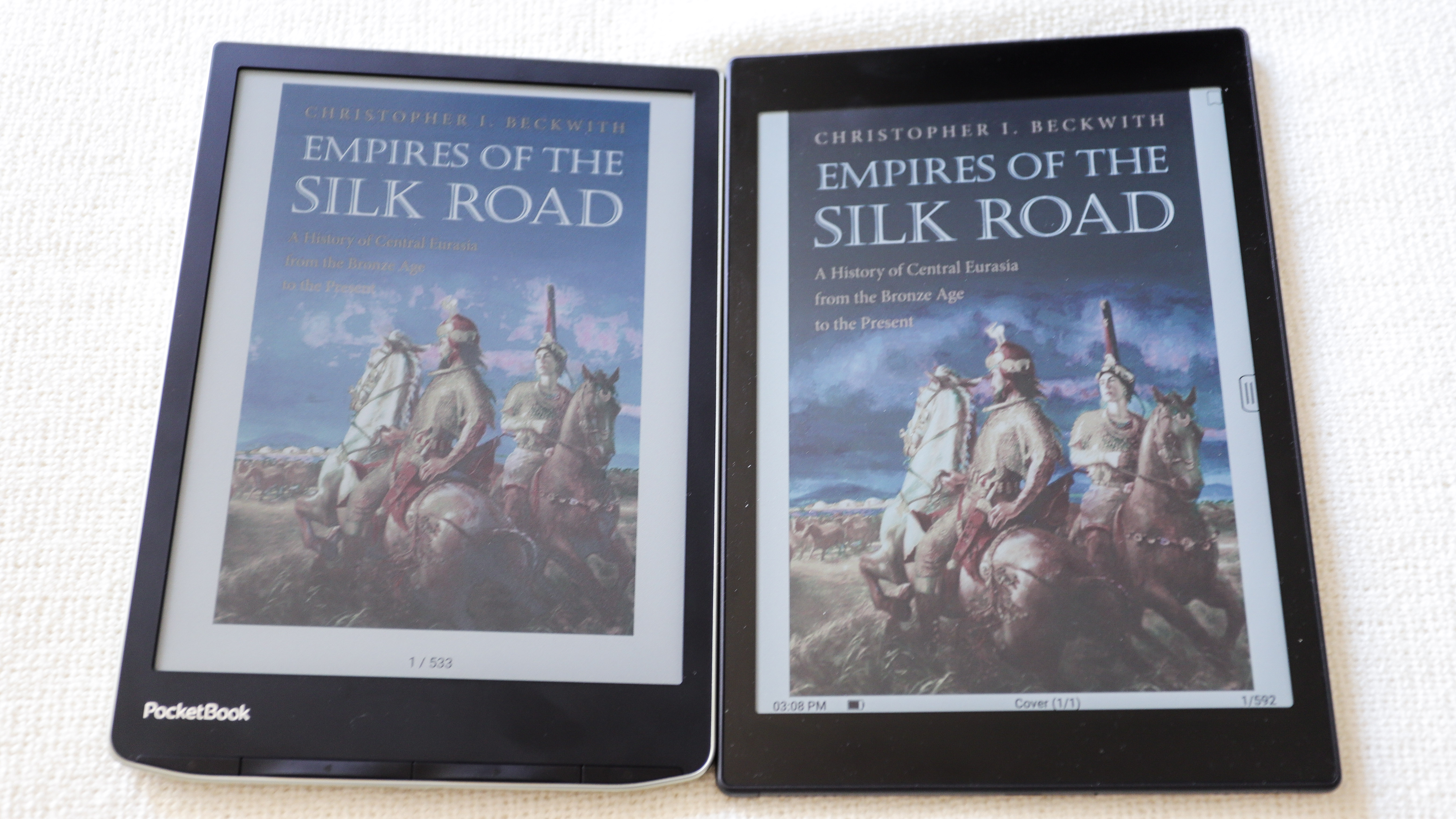
Should I buy the PocketBook InkPad Color 2?
| Attribute | Notes | Score |
|---|---|---|
| Value | It’s not badly priced for a color ereader but you’ll get more value from other options with better screens and more features. | 3.5/5 |
| Design & display | It’s a refreshing design but using an older screen technology is a bit of a letdown. | 3.5/5 |
| Software & user experience | It’s a smoother UI than what PocketBook has offered in the past, but it’s still a little clunky. | 4/5 |
| Performance | It might be faster but its display performance is disappointing. | 3.5/5 |
Buy it if...
You want a basic color ereader experience
If you’ve never tried a color ereader before and are keen, then the InkPad Color 2 is not a bad place to start.
You’ve got your own collection of comics and graphic novels
Reading in color is why you’d want the InkPad Color 2, but considering you can’t source a lot of titles from the PocketBook Store, this ereader is worthwhile if you’ve got your own collection that you can sideload.
You like listening to audiobooks
Its built-in speaker may not be loud, but its sound quality is decent. And it keeps playing even if you move away from the audiobook screen.
Don't buy it if...
You’re not much into comics and graphic novels
You’ll save some cash by opting for a black-and-white ereader if you don’t read a lot of comics, and you’ll have a lot more device choices to select from.
You want note-taking features
There are color ereaders in the same size category as the InkPad Color 2 that have writing capabilities if you think you’ll need them. They’ll cost you more, but there is value for money if you will use those features.
You already own a multimedia tablet
If you like reading in color, then the display on an iPad or a Samsung Galaxy Tab might be a better option for you, especially since the InkPad Color 2’s resolution is quite low.
Also consider
If you think the PocketBook InkPad Color 2 isn't for you, take a look at a few other alternatives below, with a full specs comparison to help you choose.
| Header Cell - Column 0 | PocketBook InkPad Color 2 | Onyx Boox Tab Mini C | Apple iPad 10.2 (2021) | Kobo Libra 2 |
|---|---|---|---|---|
| Price | $329 / £345 / AU$595 | $449.99 / £449.99 / AU$765 | $329 / £369 / AU$549 | $189.99 / £169.99 / AU$299.95 |
| Screen | 7.8-inch E Ink Kaleido Plus | 7.8-inch E Ink Kaleido 3 | 10.2-inch Retina display | 7-inch E Ink Carta 1200 |
| Resolution | 300ppi B&W / 100ppi color | 300ppi B&W / 150ppi color | 265ppi | 300ppi |
| Operating system | Linix based | Android 11 | iPadOS | Linux based |
| Storage | 32GB | 64GB | 64GB, 256GB | 32GB |
| CPU | 1.8GHz quad-core | Qualcomm Advanced octa-core | A13 Bionic | 1GHz |
| Battery | 2,900mAh | 5,000mAh | 32.4Wh | 1,500mAh |
| Connectivity | Wi-Fi, Bluetooth, USB-C | Wi-Fi, Bluetooth, USB-C | Wi-Fi, Bluetooth, Lightning, 4G | Wi-Fi, Bluetooth, USB-C |
| Waterproofing | IPX8 | No | No | IPX8 |
| File support (including audio and images) | 30 | 24 | N/A | 16 |
| Speaker | Yes | Yes | Yes | No |
| Dimensions | 134 × 189.5 × 7.95 mm | 194 x 136.5 x 8.3 mm | 250.6 x 174.1 x 7.5 mm | 144.6 x 161.6 x 9 mm |
| Weight | 267g | 310g | 487g (Wi-Fi) / 498g (LTE) | 215g |
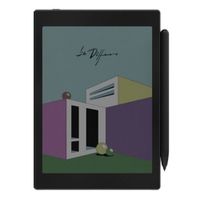
Onyx Boox Tab Mini C
I’m in the process of testing this color ereader – it’s the same size as the InkPad Color 2, but comes with newer screen tech and a full suite of writing capabilities. Color pages render well, although some hues do look a little muted, and the battery life is excellent. I’ll update this article as soon as I have my final thoughts on it ready.
Apple iPad 10.2 (2021)
While not an e-paper tablet, it's worthwhile considering a an iPad if you mostly want to read in color. The screen is sharper and brighter, and as long as you won’t be reading in bright sunlight, you should be fine. And you can do a lot more with an iPad than you can with any ereader.
Read our in-depth Apple iPad 10.2 (2021) review
Kobo Libra 2
If you read mostly word-heavy books, consider what is still the best ereader on the market. The Kobo Libra 2 might be basic and aging, but its page-turn buttons and sharp screen make it an excellent option if you want a monochrome ereader.
Read our full Kobo Libra 2 review
How I tested the PocketBook InkPad Color 2
- Used it to read for about 7 weeks, in both color and B&W
- Used it to listen to audiobooks
- Compared it directly to other 7-inch and 7.8-inch ereaders, both color and grayscale

I’ve used the PocketBook InkPad Color 2 as my main ereader for just under two months now. While it came preloaded with a lot of titles already, several were in European languages (German, Polish, etc), so I sideloaded a bunch of my favourite DRM-free titles that I own.
As a voracious reader, I used the InkPad Color 2 to read a minimum of 2 hours a day, sometimes more. I did browse the onboard store out of curiosity to see what was on offer, but refrained from purchasing anything.
While most of my reading was word-heavy – so ebooks in grayscale – I read a couple of graphic novels on it to test its color rendering and resolution. I compared how these same titles were rendered on the Onyx Boox Tab Mini C to come to my final score of the InkPad Color 2.
First reviewed September 2023

While she's happiest with a camera in her hand, Sharmishta's main priority is being TechRadar's APAC Managing Editor, looking after the day-to-day functioning of the Australian, New Zealand and Singapore editions of the site, steering everything from news and reviews to ecommerce content like deals and coupon codes. While she loves reviewing cameras and lenses when she can, she's also an avid reader and has become quite the expert on ereaders and E Ink writing tablets, having appeared on Singaporean radio to talk about these underrated devices. Other than her duties at TechRadar, she's also the Managing Editor of the Australian edition of Digital Camera World, and writes for Tom's Guide and T3.

